For psychiatrists in private practice or group clinics, establishing a thoughtful online presence is more than a marketing step—it’s an ethical extension of clinical care. Today, potential clients often start their journey by searching online, and their perception of your professionalism, empathy, and competence begins long before the first session. This comprehensive guide explores how to craft an online presence that builds trust, showcases your expertise, supports clients, and amplifies your impact. Along the way, five interlinked articles from Mental Health IT Solutions provide deeper insight and actionable strategies.
1. A Website That Feels Like a Safe Space
Your website should immediately communicate warmth, expertise, and clarity. It begins with a calming, accessible design—simple navigation, mobile responsiveness, and fast loading times. The homepage should greet visitors with compassionate language and a clear invitation to take the next step, whether that’s booking a consultation or downloading a guide.
On your “About” page, balance clinical credentials with the personal story behind why you chose psychiatry. Describe your specialties—such as mood disorders, ADHD, or anxiety treatment—in language that resonates with clients, not jargon. If you offer telepsychiatry, provide a dedicated page that outlines the process, secure platform, technology requirements, and expected structure of virtual sessions. A strong foundation here can be enriched by referencing Teletherapy Website Features Every Therapist Needs to ensure your setup offers a user-friendly, secure experience.
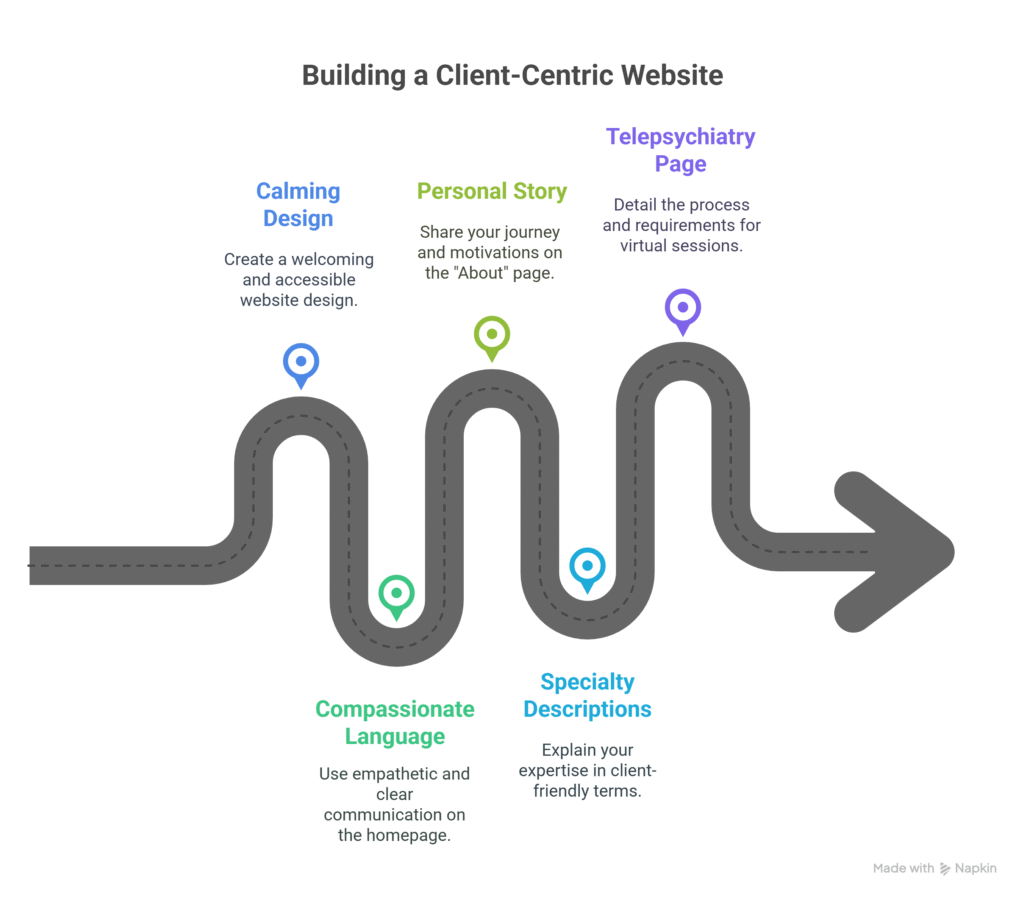
2. Leveraging Local SEO to Be Discoverable
Local search visibility is essential for psychiatrists who offer in-person or hybrid services. Claim and optimize your Google Business Profile with consistent information, quality photos, and service offerings. Encourage anonymous, respectful patient reviews to reinforce social proof.
Ensure your website content reflects your location: phrases like “psychiatrist in [City, State]” should be naturally woven into service pages and blog posts. Writing local guides—such as “How to Find Psychiatric Support in [City]”—can boost both SEO and community relevance. For an in-depth guide on improving your local search ranking, check out How Local SEO Can Help Therapists Attract More Clients.
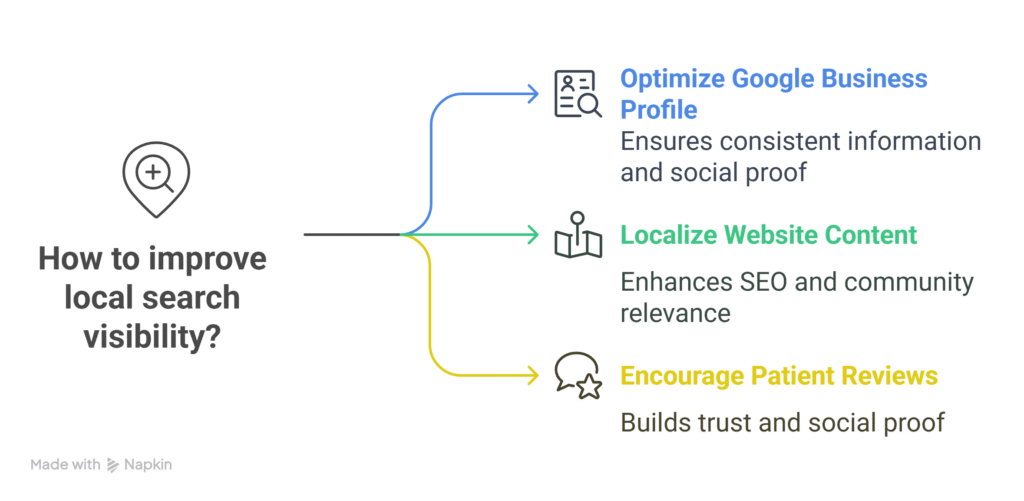
3. Consistent Content That Educates and Guides
Content marketing builds credibility and fosters a connection with your audience. Writing blog posts on topics like “Recognizing Early Depression Symptoms,” “What to Expect in Your First Psychiatry Appointment,” or “Medication Management Tips” not only offers value, but it also improves SEO and positions you as a trusted advisor.
Balance educational pieces with resource-style content (e.g., downloadable wellness guides) and service-focused CTAs linking back to your booking pages. You can deepen your content strategy by exploring Content Marketing Strategies to Engage Mental Health Clients, which offers insights into structuring articles that resonate and convert readers into clients.
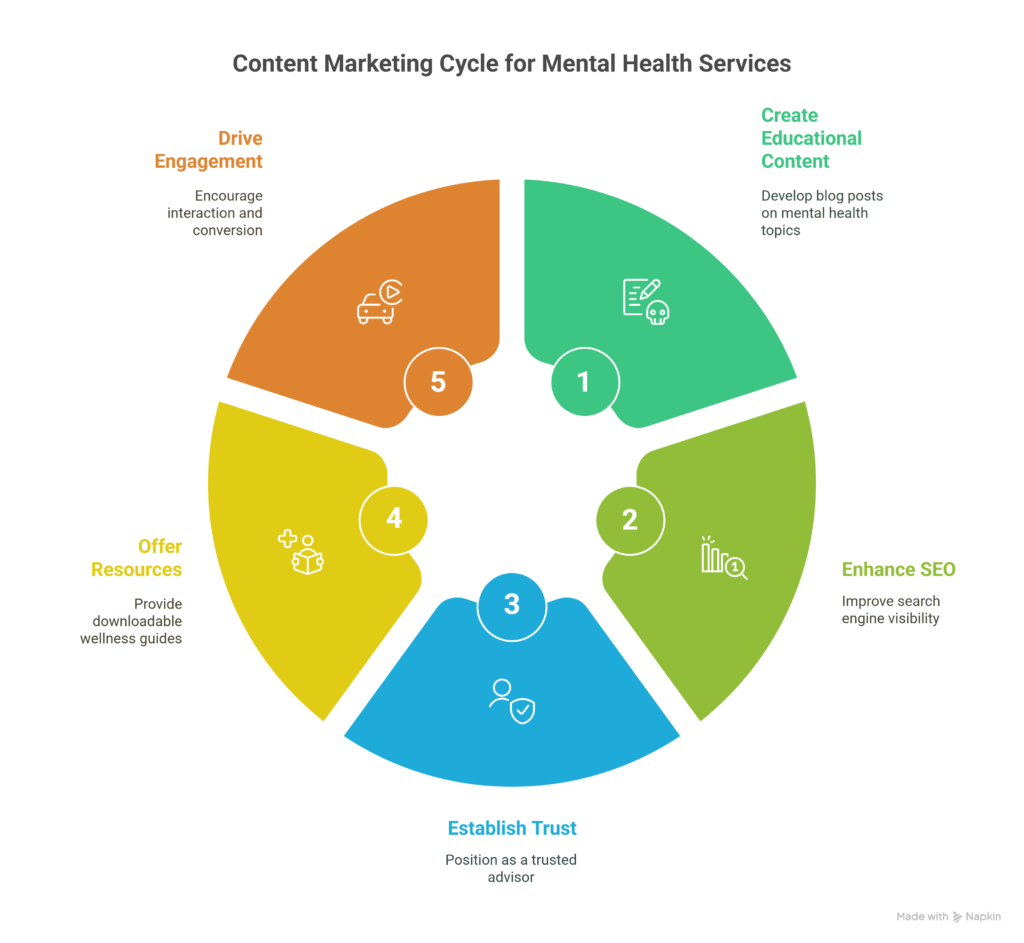
4. A Dedicated Telepsychiatry Strategy
Providing virtual care requires clarity and trust. Visitors need reassurance that sessions will be private, secure, and effective. On your telepsychiatry landing page, include technical details such as how to set up video calls, privacy protocols, and any special requirements.
Supporting visuals—like screenshots of the telehealth interface—help demystify the process. You can also embed links to your blog posts on relevant topics, such as “Teletherapy for Mental Health Professionals.” Referencing Teletherapy Website Features Every Therapist Needs ensures you’re covering the essential client-facing features that support accessibility and compliance.
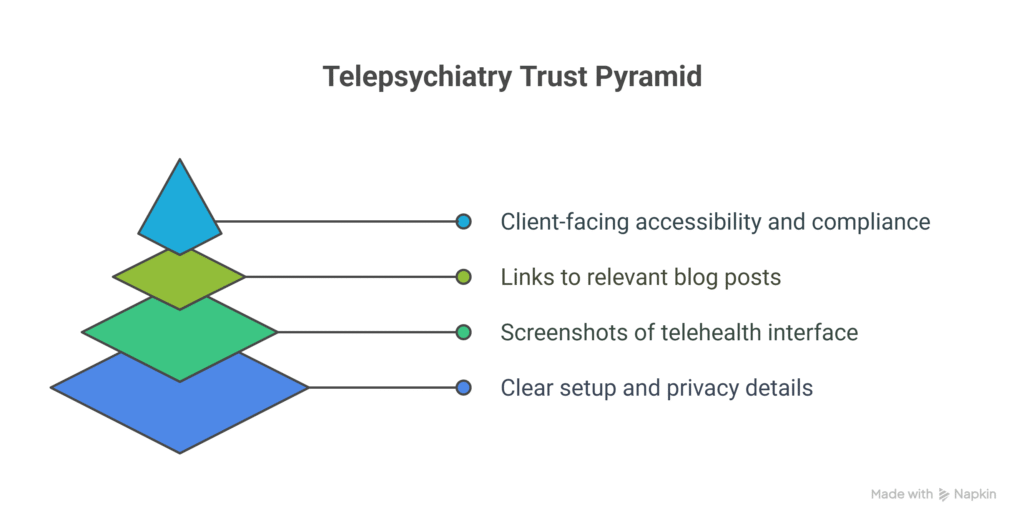
5. SEO Foundations That Connect Clients and Your Expertise
A psychiatrist’s digital presence is only useful if it can be found. Beyond local SEO, broader keyword visibility matters. Include terms like “online psychiatry,” “psychiatrist for anxiety,” or “child psychiatrist near me” in page headings and content.
As Google’s algorithms evolve, having a strong base of relevant blog content helps reinforce site value and improves rankings over time. Following the same principles behind Why Every Therapist Needs a Blog, commit to regularly publishing high-quality articles that answer real client questions and demonstrate your clinical authority.
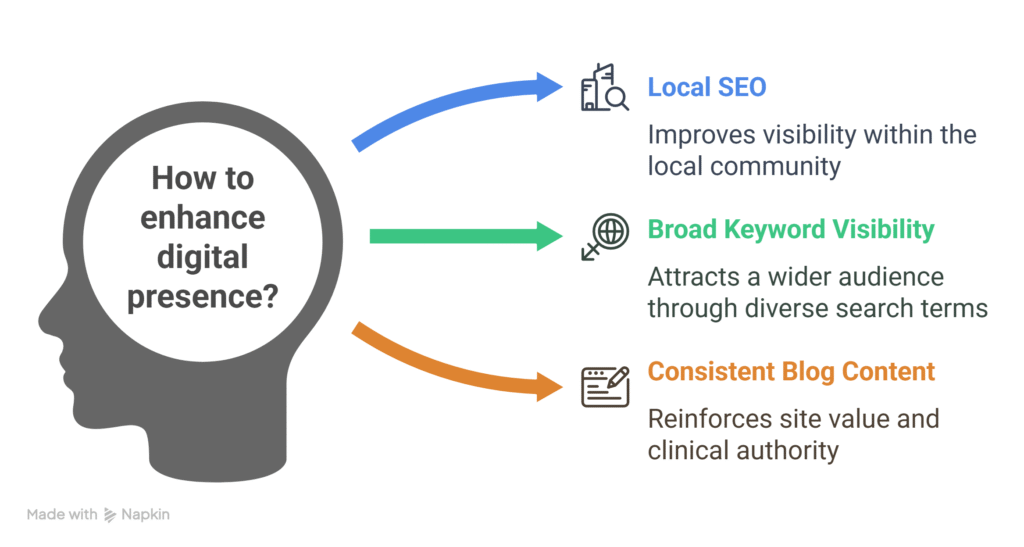
6. Social Media: Ethical Outreach and Engagement
Approaching social media as a clinician means respecting boundaries while still offering helpful content. Posts can include brief mental health tips, video explainers, book recommendations, or myth-busting insights—all without crossing professional lines.
Instagram carousel posts or LinkedIn articles can bridge distance, offering validation and education. Always include a gentle CTA to your blog, telehealth page, or booking form. To guide your social strategy, consider Social Media Marketing Tips for Mental Health Practitioners as a reference.
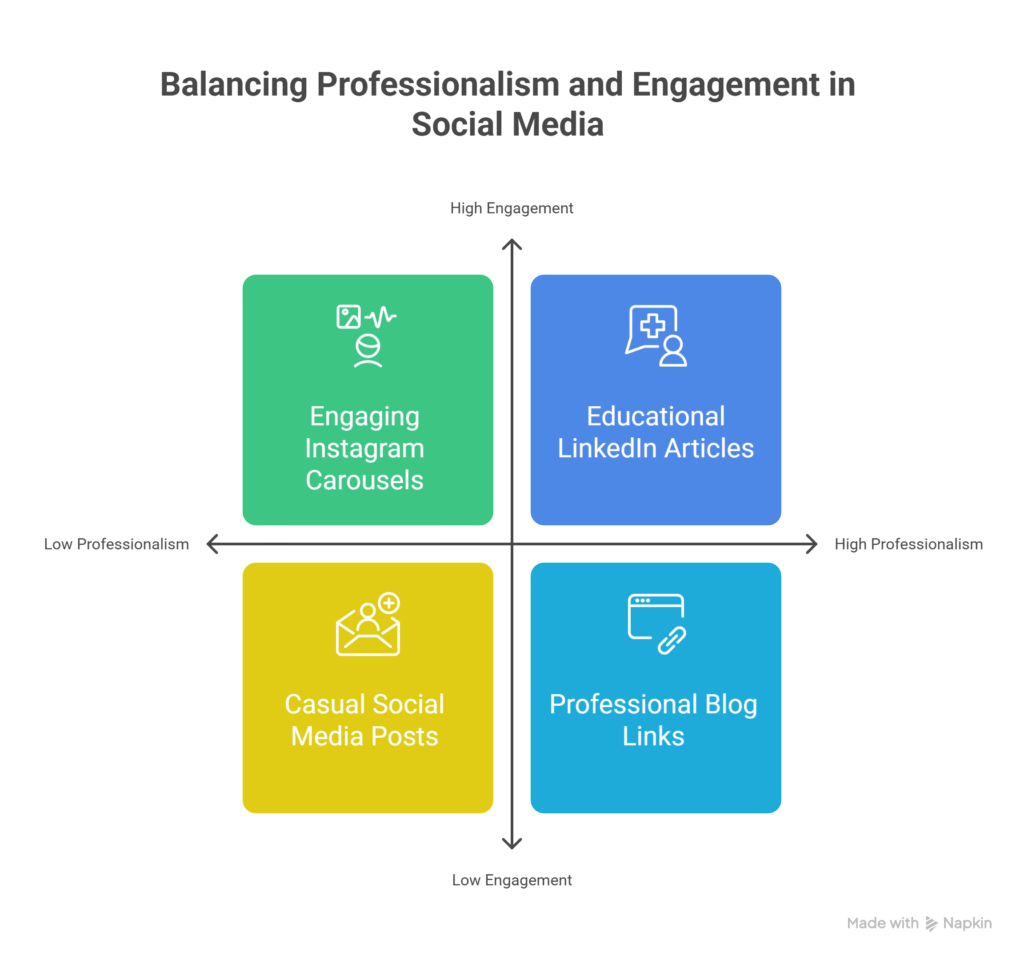
7. Paid Promotion with Client-Centric Messaging
Thoughtful paid advertising can help potential clients find support when they need it most. Google Ads targeting “telepsychiatry sessions” or “psychiatrist in [City]” can drive inquiries from motivated searchers.
Similarly, Facebook and Instagram ads that offer free guides or webinar invitations allow you to collect contact information and provide value up front. When someone clicks an ad, ensure the landing page reflects their need, whether that’s a specific service, resource, or telehealth option. Emphasizing compassion and professionalism is crucial.
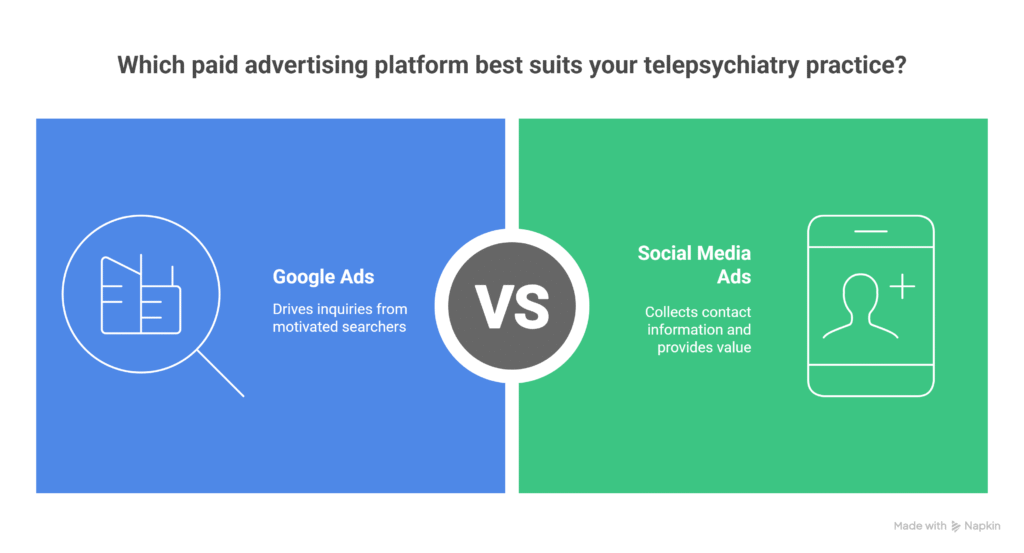
8. Analytics: Measure, Reflect, Improve
Your online presence will only grow stronger with intentional evaluation. Use Google Analytics and Search Console to monitor visitor patterns and search performance. Social media metrics reveal what content connects, while website engagement data—including form submissions—shows where visitors are converting.
Identify underperforming pages and refresh content, metadata, or CTAs as needed. Review what drives phone calls or appointment requests. This feedback loop supports ongoing improvement and message refinement.

9. Trust, Privacy, and Compliance in Every Interaction
Digital trust sets the groundwork for therapeutic trust. Ensure your website uses HTTPS, that you display a clear privacy policy, and that forms are secure. If offering telepsychiatry, reconfirm informed consent and confidentiality disclaimers.
Including visible statements about HIPAA compliance and secure communications form part of the foundation for ethical presence. Educating clients about how their data is handled builds comfort and transparency.

10. Emergent Digital Strategies for Future Growth
To stay ahead in digital mental healthcare, consider these forward-looking strategies:
- Video integration: Embed short explainer clips or introductory messages to offer a personal connection before face-to-face sessions.
- Interactive tools: A preliminary screening quiz or self-report assessment can offer value and function as intake tools.
- Accessibility enhancements: Keep pages screen reader compatible, with captions, transcripts, and high-contrast design.
- Voice search optimization: Format content to answer “What psychiatrist treats anxiety near me?” or “Can I do telepsychiatry?”
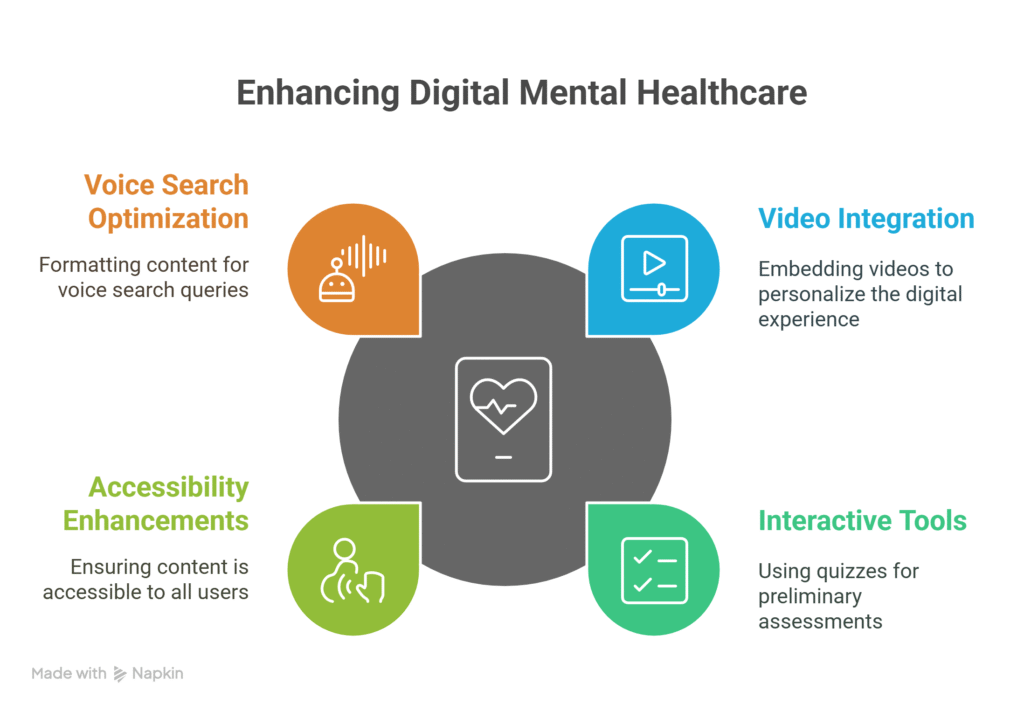
These investments elevate your presence while remaining faithful to patient-centered care.
11. Your Ongoing Online Presence Roadmap
- Audit your web foundation: Refresh content, design, and speed.
- Enhance telepsychiatry messaging: Add clarity, images, and technical guidance.
- Commit to regular content: Start with 1 post per month, scaling to more.
- Claim and update directory listings: Google, psychology platforms, local groups.
- Begin gentle paid outreach: Use wellbeing tools or introductory readings as lead magnets.
- Monitor analytics monthly: Identify top pages to refine or re-promote.
- Review compliance annually: Privacy, telehealth laws, and technology updates.

A steady cadence builds visibility and trust over time, without compromising your clinical focus.
Conclusion
An effective online presence for psychiatrists aligns with clinical values—empathy, professionalism, safety, and clarity. From a thoughtfully designed website to local SEO, content that serves, telepsychiatry clarity, mindful social media, and data-informed tweaks, you can cultivate a virtual identity that invites connection and nurtures trust.
Support your growth with expert guidance by exploring important resources, including Teletherapy Website Features Every Therapist Needs, How Local SEO Can Help Therapists Attract More Clients, Why Every Therapist Needs a Blog, and Content Marketing Strategies to Engage Mental Health Clients, each further enhanced by thoughtful implementation from Mental Health IT Solutions.






